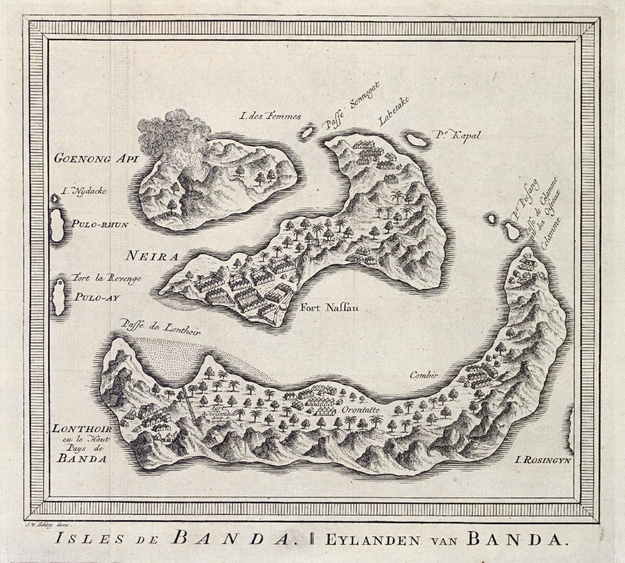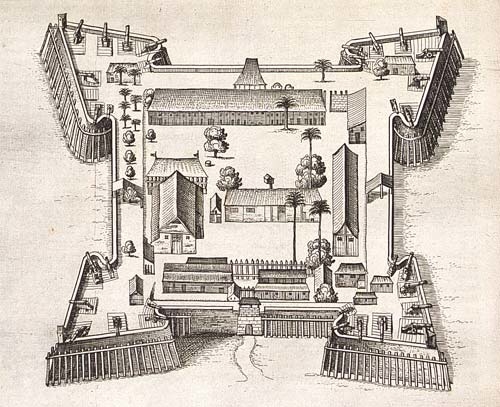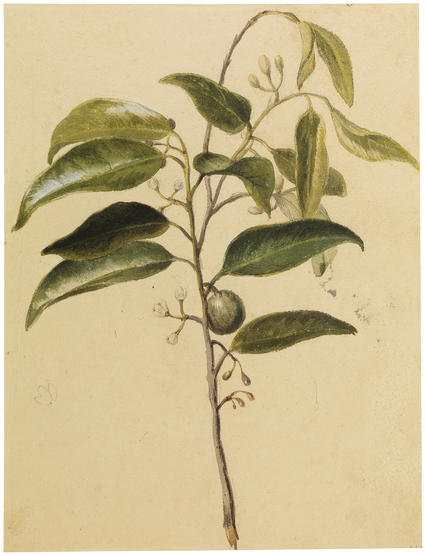“The island can be smelled before it can be seen. From more than ten miles out to sea a fragrance hangs in the air and long before the bowler-hat mountain hoves into view you are nearing land.”
The Banda Islands, a set of isles in the province of Maluku, is also famously known today as the Spice Islands. The people and the place itself require no elaborate introduction when it comes to their contribution to our contemporary culinary paradigm. Until the mid-19th century the Banda Islands were the world's only source of the spices nutmeg and mace (mace being a bi-product of nutmeg).
Yet, the island’s story is complex, with many sides untold, as is the nature of history. We thought it would be interesting to frame the re-telling of this gruesome narrative through the perspective of some Malay sources.
Imagine the setting: it is the 16th century, and Maluku is a thriving collective of islands wedged between Papua in the east, and Borneo in the west. Its geographical proximity to the medieval equivalent of a highway not only makes the island easily accessible but its prized produce was valued like edible gold. The pungent, spicy aroma of ground nutmeg is tantamount to a wintery treat today in the West. It is the warming fragrance in eggnog, a Christmas pudding, or even a good old-fashioned cup of cocoa. The massive cargo of nutmeg and mace wafts by the will of the ocean breeze, perfuming the houses by the Port of Amsterdam. But this seemingly benign spice is also a symbol of identity, pride, and a renaissance for the Bandanese. Parallel to that, it is worth mentioning the plant by its indigenous name, Pala, and nutmeg itself as Buah Pala.
Economic flourish did not begin in the early modern ages for Maluku. Prior to European interference, the Maluku islands were a part of the Srivijaya empire, headquartered in Sumatra. And naturally, as the empire was a trading ally with India and China, the production of nutmeg in Banda was rooted in international demand (Leirissa, 1999). Traded amongst silk, Chinese porcelain, and other expensive goods, nutmeg was also traded by the Arabs to the Venetians. Therefore, by the time the Dutch was introduced to this edible gold, the trading network was already ripe.
The first instance of colonial presence in Banda was the Portuguese, by way of having taken over Malacca, a then-famous port for Southeast Asian trade. Nutmeg and mace were taken by long-faring traders from Maluku or Java. And having followed the Portuguese merchants, the Dutch stumbled upon the Spice Islands themselves. Yet, from the beginning, the Dutch and the Bandanese people were resentful of each other.On one hand, the Dutch found the Bandanese conniving and untrustworthy people, whereas the Bandanese found the Dutch offer to be less profitable compared to the goods brought by traders from around the Indian ocean (Mansyur, 2014). Nevertheless, the Dutch were adamant to make connections with Banda. At this point, nutmeg was sold in Amsterdam at 122:1 times its sale price in East Indies (Jordan, 2016). At that kind of price point, the Dutch expeditions quickly came flooding in. Back in the Netherlands, the merchants knew that competition was going to eat up everyone; therefore, a union was prompted. In 1602, the VOC (Vereenigde Oostindische Compagnie / The Dutch East India Company) was established so that the Dutch could maintain their course to monopolize the spice trade.
But back in the Banda islands, the ruling elite (known as Orang Kaya) was in control as they had been for centuries. Once the VOC was established, the Dutch came to realise that India was consuming twice as much as the European market. Soon the Dutch came to the Orang Kaya with a treaty to grant India with a full monopoly on the trade.
However, whether it was the case that not all of the Orang Kaya signed, or if those who did sign did not understand the extent of the treaty, the agreement was never kept by the Bandanese. This led the VOC justifying military means to fulfil the treaty. In 1609, Fort Nassau was established by the Dutch to claim the island and keep the locals in check. This only worked to anger the locals and caused them to retaliate with an attack, resulting in the ambush of Dutch admiral, Pieter Willemsz Vierhoff, and his entourage. One low-ranking merchant managed to escape the attack: Jan Pietersz Coen. This may have had an influence over Coen's approach towards the Bandanese about 2 decades later.
In 1620, the now Governor-General of the VOC, Jan Pietersz Coen, led a fleet from Batavia (essentially present day Jakarta, Indonesia) to The Spice Islands. This began the horrific events known as the Massacre of Banda. Though the story is often told in details by Western sources (Corn, 1998), local sources appear to not dwell on the details. What is interesting to note here is how the Indonesian sources and studies often focused on how the monopoly worked economically rather than focusing on the emotions and senses of these histories. However, that is not to say that the pains of the massacre did not impact the people at all. Simply, it was never recorded so as to not be embedded forever. After all, contemporary identities take root in the de-colonized histories of Indonesia.
What is valuable in this narrative is not lingering on unpalatable stories from the VOC's past. Towards the aim for de-colonising history, it is interesting to see how nutmeg is valued in the east and how its story is preserved in local academia. The story of the Bandanese massacre is clearly one that cannot be told in any easy way and is amongst the many un-told stories of horror in Dutch colonial history. And yet, at the very surface, one blanket over this profound, largely unknown, history is the aroma of Christmas pastries wafting over the streets of Amsterdam.


